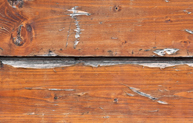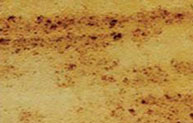A Guide to Identify and Remedy Stains On Painted Surfaces
Thanks to the house painting professionals at Sherwin Williams, we can provide you with a handy guide to identifying the causes of most stains and discolorations on painted surfaces! Plus, you’ll also find general guidelines on how to eliminate or remedy the most common causes of stains on painted surfaces. Click on the image that closest represents your stain or discoloration for more information on remediation:
Alkali Burning / Discoloration
Color loss and overall deterioration of paint film on fresh masonry, concrete, or stucco.
Chalking (Powdering)
Appearance of mildew, but affecting a widespread area and does not lighten when tested with bleach.
Darkening / Decaying of Wood
Appearance of mildew, but affecting a widespread area and does not lighten when tested with bleach.
Dirty / Soiled
Accumulation of dirt, dust particles, and/or other debris on the paint film.
Efflorescence (White Crystal Deposits)
White, fluffy deposits of salt crystals on masonry surfaces.
Mildew
Black, gray, green, or brown spots on any surface.
Rust
Reddish, brown (or sometimes black) stains appearing as blotches or streaks on surface or paint (see also Tannin Staining).
Staining – Water, Smoke, Etc.
Stains in the paint surface caused by virtually anything that would bleed, leak, or stick to the paint film.
Tannin Staining
Brownish or tan discoloration on the paint surface (see “Rust”).
Stain Resistance
Failure of the paint to resist absorption of dirt and stains.
Surfactant Leaching
Concentration of water-soluble paint ingredients called “surfactants” on the surface of a latex paint.
Wax Bleed
The problem appears as a splotchy dirt collection.Read more articles at Ask Sherwin-Williams

